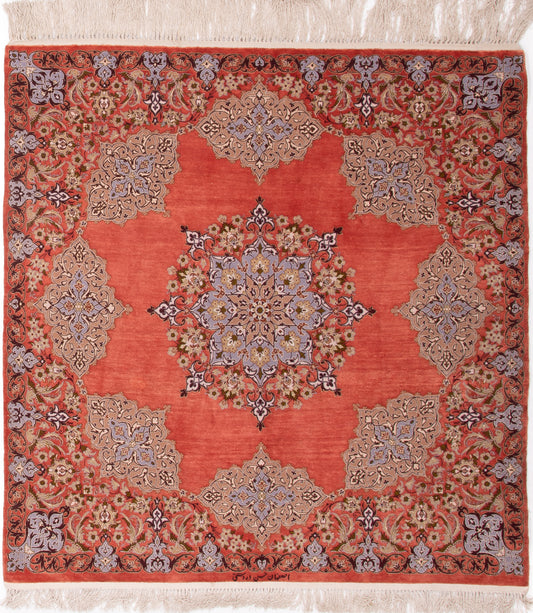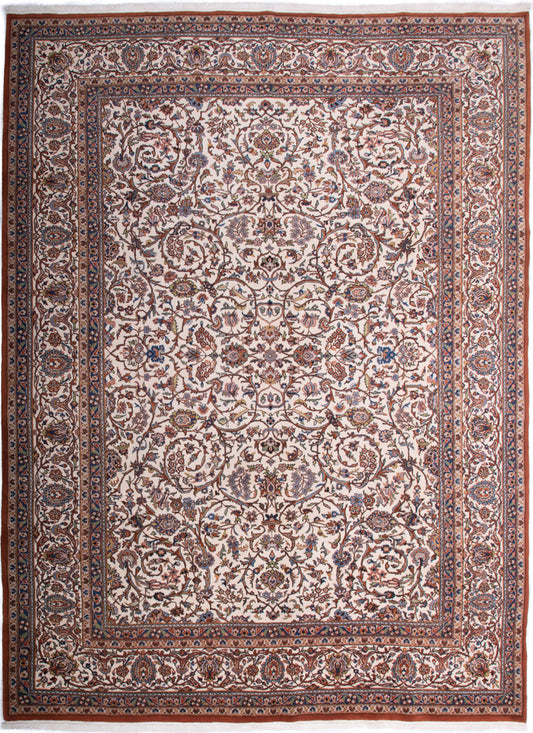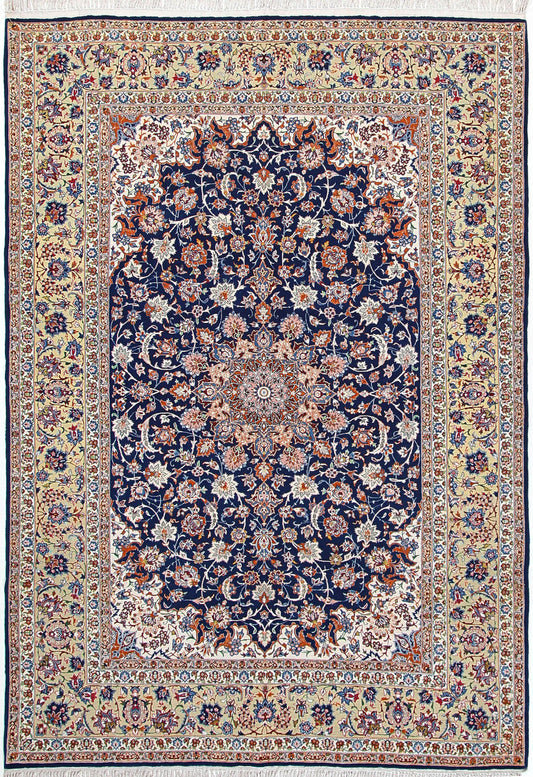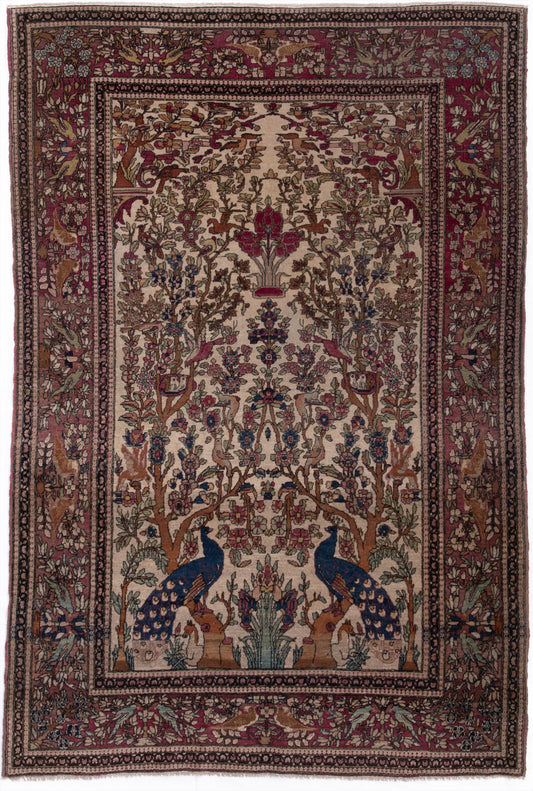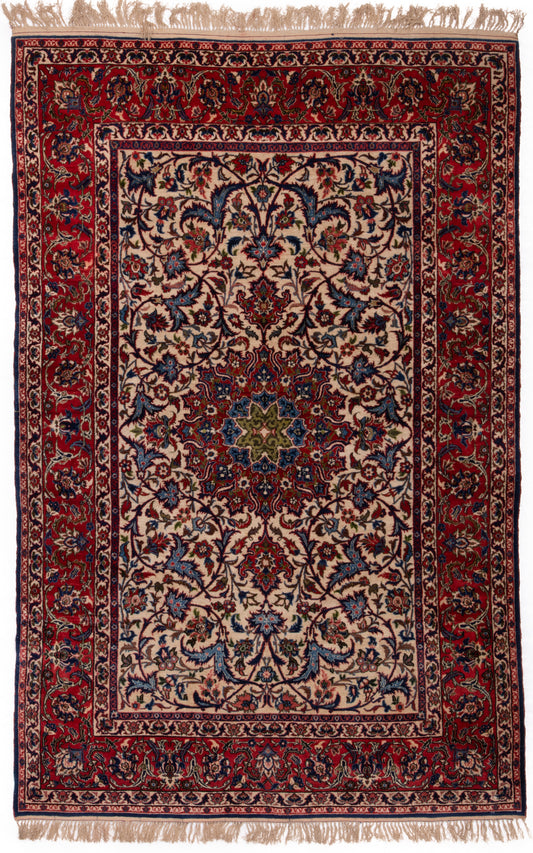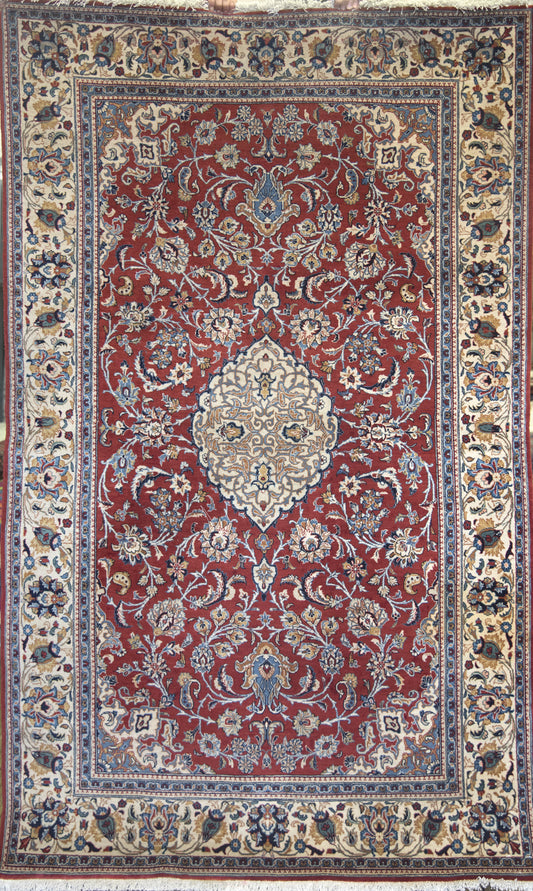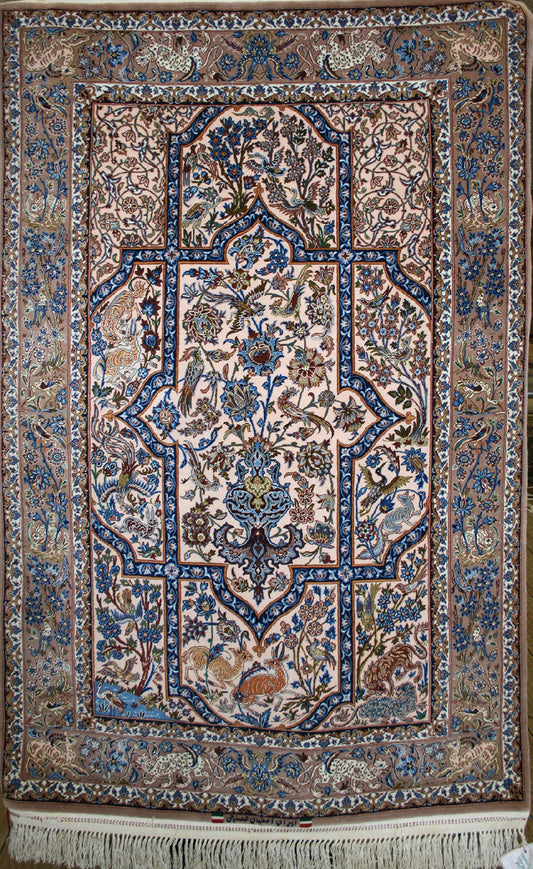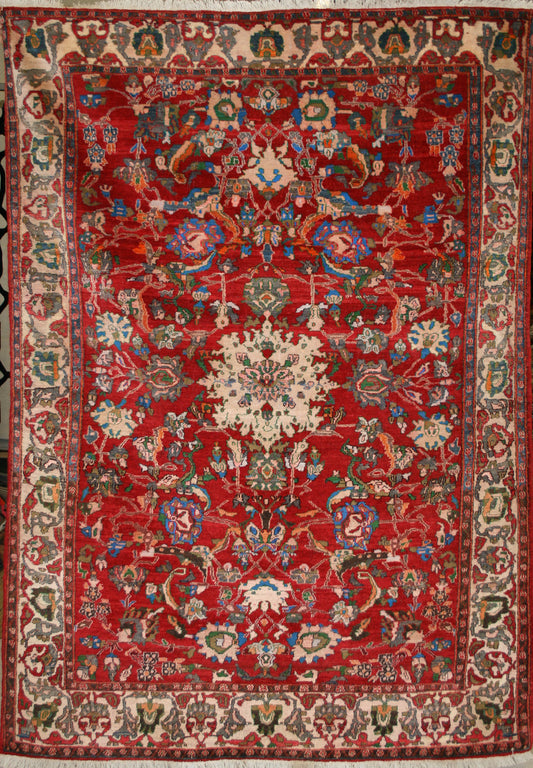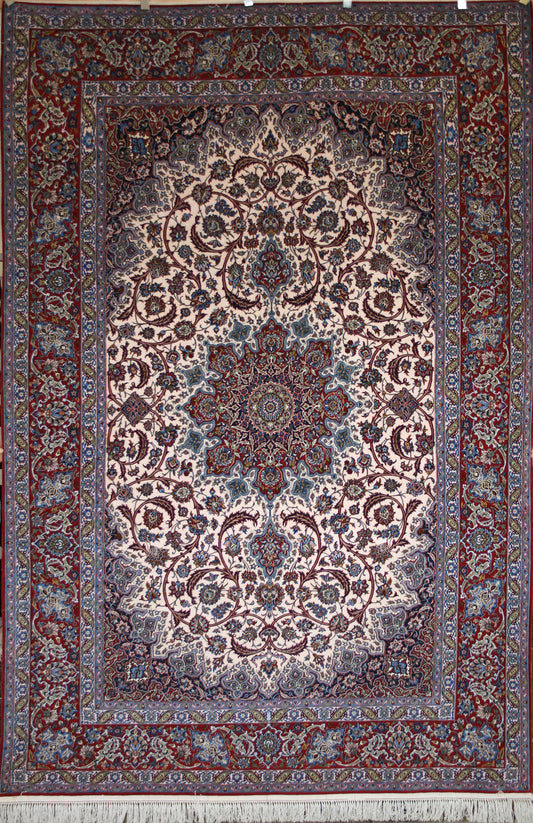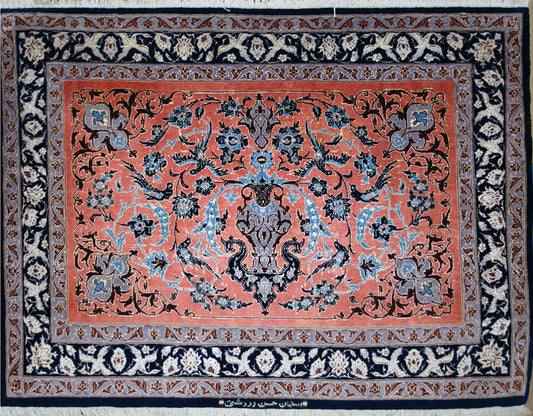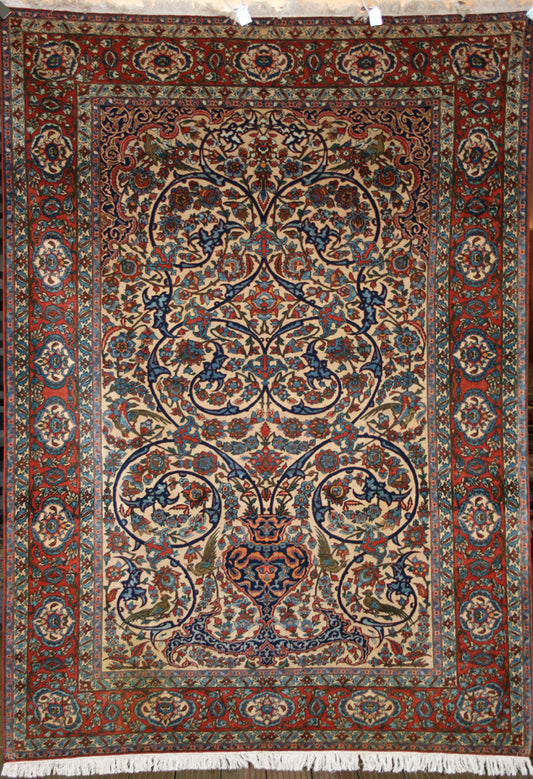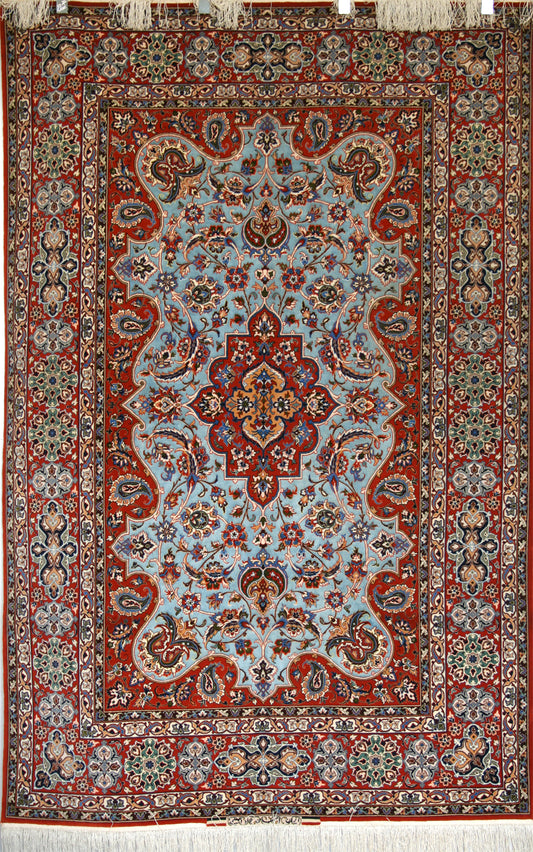Isfahan Rug History & Origin Guide
Introduction
Isfahan, a UNESCO World Heritage city in Iran, is renowned for its stunning architecture and rich cultural heritage.
One of its most treasured art forms is the Isfahan rug, which has captivated collectors and enthusiasts for centuries.
In this comprehensive guide, we'll delve into the history and artistry of these exquisite handmade rugs and reveal what makes them so special. Don't forget to browse our exclusive collection of Isfahan rugs.
The History of Isfahan and Rug Weaving
Isfahan has been a centre of art and culture since ancient times, but it reached its zenith during the Safavid dynasty in the 16th and 17th centuries.
The Safavids transformed the city into a vibrant cultural capital, and it was during this time that Isfahan became famous for its rug weaving.
Many royal workshops were established, attracting the most talented artisans and craftsmen from across the region. Today, the city's rug-making heritage is still very much alive, with local weavers continuing to create exquisite masterpieces.
Patterns, Motifs, and Colours
Isfahan rugs are known for their intricate patterns, often featuring floral and arabesque motifs inspired by the city's breath-taking architecture.
Central medallions, vases, and tree of life designs are also common, each symbolising different aspects of Persian culture and beliefs.
The colours used in Isfahan rugs are typically rich and vibrant, with shades of red, blue, and gold dominating the palette. The dyes are made from natural sources, ensuring that the colours remain vivid and long-lasting.
More detailed motifs found in Isfahan rugs include:
- Shah Abbasi Flowers: Stylised floral motifs often used in the field and borders of the rug.
- Islimi: An intricate arabesque pattern formed by interlacing tendrils and vines.
- Boteh: A teardrop-shaped motif, which is the precursor to the paisley design.
Materials and Techniques
The finest Isfahan rugs are made from high-quality materials such as silk and Kork wool, which is soft, lustrous, and durable. The weavers use the Persian knotting technique, allowing them to create incredibly detailed and intricate designs. The knot count for an Isfahan rug can range from 200 to 700 knots per square inch, making these rugs truly luxurious and sought-after.
One of the most famous master-weavers of Isfahan is Seirafian, whose family has been producing extraordinary rugs for generations. Seirafian's rugs are renowned for their exceptional craftsmanship, intricate designs, and the use of the finest materials. These highly collectible rugs are often considered the pinnacle of Isfahan rug weaving.
Notable Tourist Attractions
As a cultural, arts and architectural centre, Isfahan is one of the best cities in Iran to visit. Visitors to Isfahan can explore numerous historic sites and landmarks that showcase the city's rich cultural heritage. Here are the top 10 tourist destinations in Isfahan:
- Imam Square (Naqsh-e Jahan Square)

- Shah Mosque (Imam Mosque)
- Sheikh Lotfollah Mosque
- Ali Qapu Palace
- Chehel Sotoun Palace
- Hasht Behesht Palace
- Khaju Bridge
- Vank Cathedral
- Si-o-Se Pol (33 Arches Bridge)
- Menar Jonban (Shaking Minarets)








Don't miss the chance to visit the city's bustling bazaars, where you can find authentic Isfahan rugs and witness the skill of local weavers first-hand.
Other Arts and Special Events
Isfahan is also known for its other artistic traditions, including tilework, metalwork, and miniature paintings. The city is home to numerous skilled artisans who create intricate artworks reflecting the rich cultural history of the region.
Isfahan hosts several special events throughout the year, such as the Isfahan Music Festival, which celebrates traditional Persian music, and the Isfahan International Children's Film Festival. These events attract visitors from around the world, showcasing the city's vibrant cultural scene.
Best Time of Year to Visit
The best time to visit Isfahan is during the spring (April to June) and autumn (September to November) months when the weather is mild and pleasant. This is the ideal time to explore the city's historic sites and enjoy the beautiful gardens and parks. It is also a great time to attend local festivals and experience the city's lively atmosphere.
Isfahan Rugs
Ready to bring a piece of Isfahan's rich history and artistry into your home?
Browse our exclusive collection of handcrafted Isfahan rugs and find the perfect one to complement your space. Experience the beauty and craftsmanship of these exquisite rugs for yourself today!
Browse Our Current Selection of Isfahan Rugs
-
Persian Isfahan Silk Rug
Regular price £4,195.00Regular priceUnit price / per -
Indian Isfahan Rug
Regular price £2,095.00Regular priceUnit price / per -
Semi-Antique Persian Isfahan Wool & Silk Rug
Regular price £12,460.00Regular priceUnit price / per -
Antique Persian Isfahan Rug
Regular price £1,995.00Regular priceUnit price / per -
Semi-Antique Persian Isfahan Rug
Regular price £9,475.00Regular priceUnit price / per -
Semi-Antique Persian Isfahan Rug
Regular price £3,595.00Regular priceUnit price / per -
Persian Isfahan Wool & Silk Rug
Regular price £3,995.00Regular priceUnit price / per -
Semi-Antique Persian Isfahan Rug
Regular price £2,295.00Regular priceUnit price / per -
Persian Isfahan Rug
Regular price £14,395.00Regular priceUnit price / per -
Persian Isfahan Wool & Silk Rug
Regular price £2,495.00Regular priceUnit price / per -
Antique Persian Isfahan Rug
Regular price £12,495.00Regular priceUnit price / per -
Persian Isfahan Wool & Silk Rug
Regular price £12,995.00Regular priceUnit price / per

